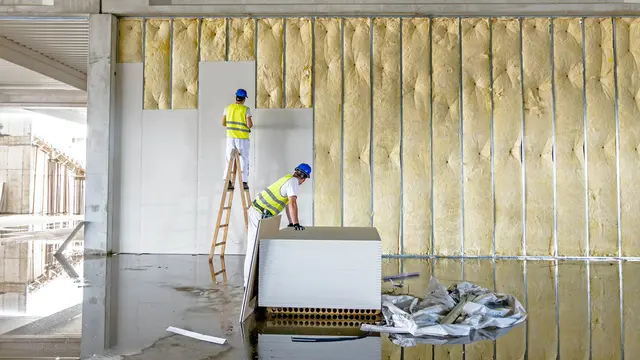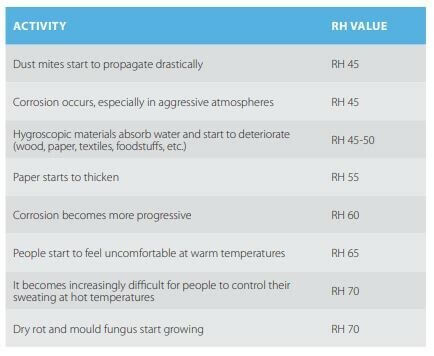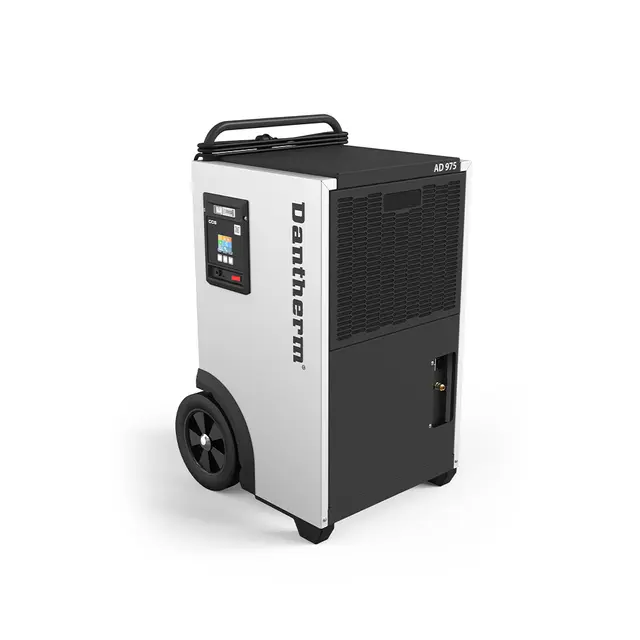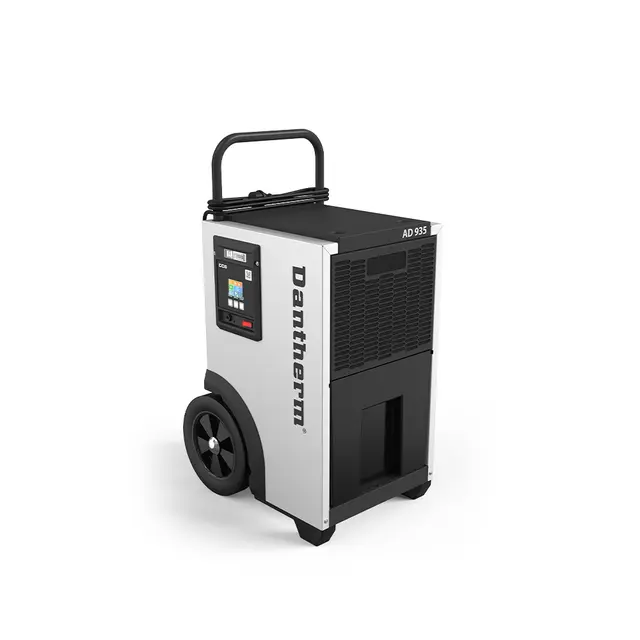How to calculate the dehumidification load

- Home
- Insights
- Humidity control and drying insights
- How to calculate the dehumidification load
Calculating the correct size of an air dehumidifier can be a challenge. The humidity of the air affects both people, electronic equipment, machinery and various materials in the room. The below table lists RH values indicating when various negative effects of excess water content in the air set in. Please note that the values listed are merely indicative as there are situations in which even lower RH values might cause problems. For instance, you should keep the RH value below 40% when dealing with large cold surfaces.

In all cases concerning continuously high levels of relative humidity, we recommend identifying the root cause of the problem instead of just fixing the symptoms. Often, you will find ways to reduce or even eliminate the problem before applying mechanical dehumidification.
As demonstrated in the article "The theory behind dehumidification", the Mollier-hx chart is an important tool in determining the desired temperature and RH value for a room or a building. However, you need to consider several parameters before calculating the required dehumidification load and choosing the right dehumidifier for the job.
Meteorological data
First, you have to get hold of some general meteorological information for your geographic area. Temperature and RH values change from region to region and they also vary quite a lot during the year. Statistics are available for most geographical areas and can be obtained locally (the below table demonstrates how much outside conditions fluctuate during a year in Denmark). To ensure sufficient capacity, always use the worst case scenario figures for water content (July level for Denmark).
Notice that even with a high RH value in a cold winter month, the water content of the air is relatively low, whereas the hot summer months normally constitute worst case scenarios with a relatively low RH value and high water content due to the fact that hot air holds more water.

Room size
The size of the room or the building is an indirect influence factor as the amount of water in the air determines the required dehumidification capacity. To do that, you need to calculate the volume of the room in cubic metres to determine how much air it holds.
Air change
The air change, n, is very important as outside air contributes to both the temperature and RH values inside the room. Research has shown that most problems related to excess water content in the air are caused by air change problems.
You must determine or estimate how many times per hour the air of the room is changed. This ventilation might occur naturally because the room is not completely tight, or it might be forced due to mechanical ventilation and by doors or windows being opened regularly.
The additional water content added to the room by the air change is measured in kg water/hour and calculated using this formula: W(ventilation) = ρ * V * n * (x1-x2).
W = g water/hour
ρ = air density (kg/m3) = the value commonly used is approximately 1.2kg/m3 at 15-25°C
V = room volume (m3)
n = air change in the room (hour -1)
x1= water content in the outside air (worst case) (g water/kg air)
x2= water content in the inside air at the required RH value (g water/kg air)
Other sources
Finally, you have to determine the humidity coming from people, processes, products and other sources.
Not all sources are applicable to every case, but the general formula is: W(total) = W(people) + W(process) + W(goods) + W(ventilation)
W(people): Water content contributed by people perspiring. (See Table 5)
W(process): Water content contributed by activities and processes inside the room i.e. production, cooking, washing, etc. and by open water surfaces inside water works, production facilities, etc. This contribution can vary quite a lot and must be determined in each case.
W(goods): Water content contributed by goods and products drying inside the room. Often, you can obtain information about this contribution from the supplier
W(ventilation): Water content contributed by the air changing allowing outside air to enter the room.
A word of caution
Normally, a temperature rise triggers an increase in relative humidity, enabling the dehumidifier to dry out the room faster. However, be cautious not to increase temperature too much too fast. Too high temperatures may dry out wooden ceilings, walls or floors too much and cause them to crack. And, a quickly increased temperature may trap humidity inside your building construction.
Establishing a good indoor climate
The key concern when establishing a comfortable indoor climate is to ensure a sufficient air change. In general, an air change of 0.5 per hour is recommended to provide a sufficient supply of fresh air, but in rooms with a large number of people, increasing the rate of air change may be required.
An equally important factor is the relative humidity in the room. Many people are allergic to dust mites, fungus and mould. These microorganisms thrive in humid air, but they cannot survive in relatively dry air. This is why you should maintain an RH value below 45% to ensure a healthy indoor climate.

In general, an air change of 0.5 per hour will ensure a low RH value, but as we have already seen, it really depends on a number of factors.
Preserve and protect goods and materials
Humidity problems concerning the preservation and protection of goods and materials are typically a question of making sure the RH value never exceeds a predetermined level. Usually the room is a storage facility or a warehouse.
The quality of such storage rooms varies considerably. Often, they are either very well sealed off from the outside air or poorly insulated. In both cases, the air change is an important quantity. The table below illustrates the difference in air change in various rooms depending on the quality of the insulation.
However, the air change is not the only parameter to take into account. Again, you must consider the humidity contribution from people, outside air, goods and possible processes inside the storage room.

Related products
Featured insights

How to calculate your dehumidification requirements

A quick guide on how to dry out renovation work on construction sites

Discover everything you need to know about approaching a water damage restoration project.
Need help with choosing the right solution? Our team of over 100 climate control experts can assist.
You can also reach out or join the discussion on our Social Media. Check out our LinkedIn page.




